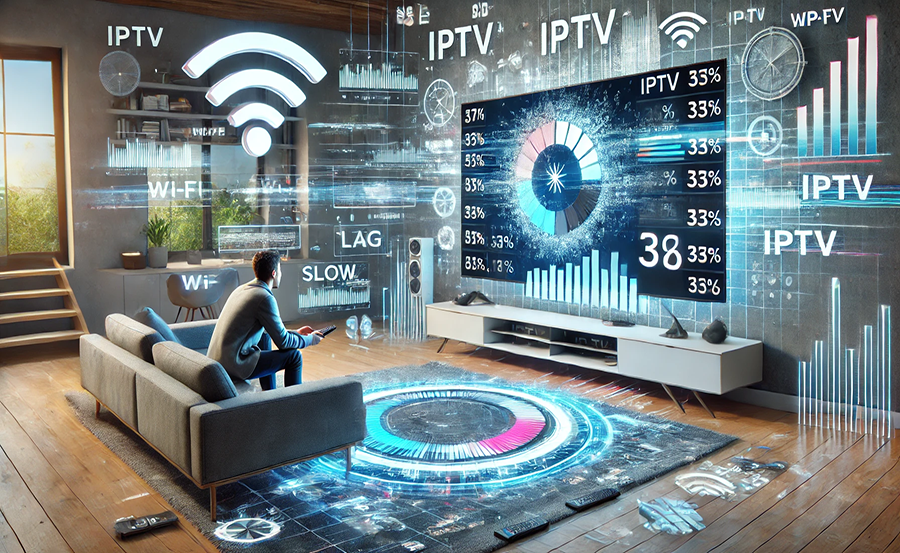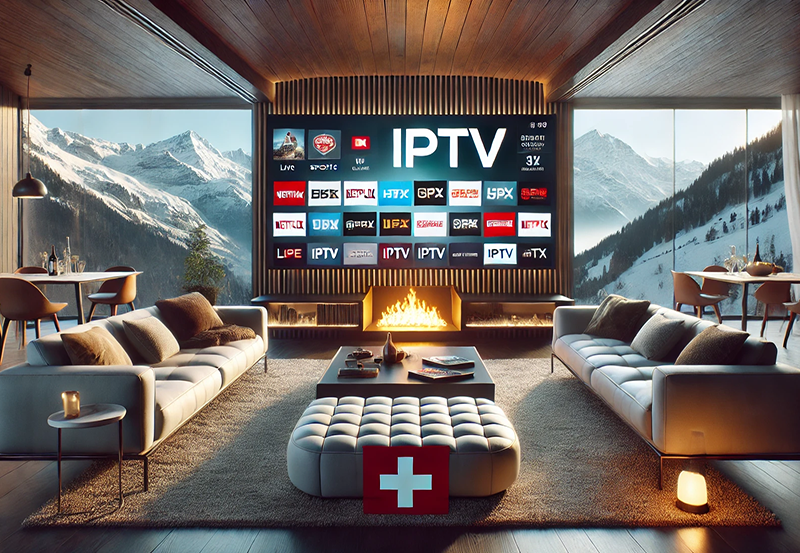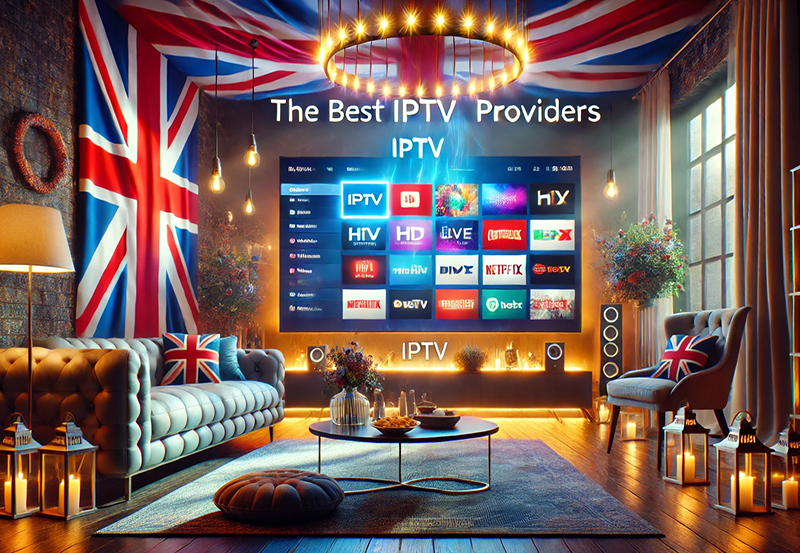Understanding the Basics of IPTV Streaming
Internet Protocol Television, better known as IPTV, has gained significant traction over the years. It’s essentially a way to stream television content over the internet, bypassing traditional cable or satellite TV. But streaming IPTV, especially live TV, comes with its own set of challenges and considerations, particularly on wireless networks. Those interested in improving their streaming experience need to understand the fundamentals before diving deeper into optimization strategies. Buy 1 Year IPTV Subscription and Enjoy Unlimited Content
Streaming quality is often influenced by various factors including network strength, device compatibility, and the type of content being streamed. To make your IPTV streaming on platforms like Roku seamless, appreciating the interplay between these factors is key. This guide will shed light on methods and best practices to enhance IPTV streaming, ensuring a smooth and enjoyable viewing experience.
The Rise of IPTV and Its Benefits
The popularity of IPTV stems from its versatility and user-friendliness. Unlike traditional broadcasting methods, IPTV offers on-demand access to a plethora of content. Users can enjoy IPTV on various devices including smart TVs, laptops, and mobile phones. It is particularly favored for its ability to stream live TV, providing flexibility that was unimaginable a few years ago.
Another benefit is its customization potential. IPTV allows users to choose what they want to watch without being tied down to pre-scheduled broadcast times. This feature is especially appreciated by those seeking more control over their television consumption, boosting its appeal across different demographics.
Challenges of Streaming IPTV Over Wireless Networks
Despite its advantages, streaming IPTV over a wireless network is not without challenges. High-definition content demands significant bandwidth, making it susceptible to buffering issues if the network can’t meet these demands. Moreover, wireless connections are often more unstable than wired alternatives, leading to intermittent disruptions that degrade the streaming experience.
Environmental factors such as physical obstructions and interference from other devices can further complicate wireless streaming. Identifying and understanding these issues is essential for optimizing quality. Many users face difficulties when connecting through routers or when multiple devices share the same network, affecting the overall bandwidth available for streaming.
Practical Strategies to Improve IPTV Streaming
Improving streaming quality involves a multifaceted approach. Below are strategies aimed at enhancing IPTV performance on wireless networks. While some may require a minor investment in time or budget, the payoff is a significantly improved viewing experience.
Optimizing Your Wireless Network
The first step in enhancing streaming quality is optimizing your wireless network. A strong, stable connection is the backbone of uninterrupted IPTV access. Here are a few tips:
- Ensure your router is in a central location to minimize signal obstacles.
- Update your router’s firmware to leverage the latest performance improvements.
- Consider using dual-band routers that can handle multiple protocols simultaneously.
By addressing these network fundamentals, you can minimize buffering and improve overall signal reliability, ensuring your streaming sessions are smooth and enjoyable.
Hardware Adjustments
Sometimes, slight alterations in your hardware setup can substantially improve stream quality. When possible, use a wired connection rather than wireless. If that’s not feasible, employ WiFi extenders to bolster weak signals.
Additionally, upgrading to a router that supports the latest Wi-Fi technologies, such as Wi-Fi 6, can offer significant benefits. These modern routers are designed to support higher bandwidth demands, making them suitable for streaming IPTV in high definition.
Configuring Device Settings for Optimal Performance
Device settings can considerably impact streaming quality. To obtain the best results:
- Set your device to the highest available resolution supported by your display screen.
- Adjust buffer settings if your application allows, choosing a higher buffer to avoid frequent halts.
- Clear cache regularly to prevent playback issues caused by old data.
Such fine-tuning ensures your device is geared towards providing the best possible streaming experience.
Testing Connection Speeds
Regularly testing your connection’s speed is vital. Use speed test applications to gauge your network’s capability to handle high-quality streams. Should you find your speeds lacking, contact your ISP to discuss potential upgrades. Sometimes, small increases in bandwidth can make a significant difference in your overall streaming quality.
Exploring IPTV Options: Types and Platforms
With the basics covered, it’s beneficial to understand the different IPTV options and platforms available. This knowledge allows users to select the best service that fits their needs and streaming conditions. Whether you’re using IPTV on Roku or any other device, comprehending the distinctions among platforms remains crucial.
Choosing the Right IPTV Service
There are myriad IPTV services to choose from, each with distinct features and content offerings. When selecting an IPTV provider, consider factors such as channel variety, ease of use, and compatibility with your devices. Many providers offer free trials—make use of these to test service quality before committing.
It’s also important to review user feedback and expert reviews. These resources provide valuable insights into the reliability and performance of IPTV services, helping you make an informed choice.
Compatible Devices and Setup
Ensuring device compatibility is another critical step. Most modern devices are equipped to handle IPTV streaming, but specific setup instructions may vary. The Expert’s Guide to IPTV Enjoyment advises consulting your provider’s documentation for installation and troubleshooting tips tailored to your device.
Moreover, don’t overlook the importance of keeping your devices up to date. Firmware updates often include enhancements that improve streaming performance, mitigating common issues encountered on older software versions.
Suggested Platforms for IPTV Streaming
Although IPTV can be streamed on numerous platforms, some stand out due to their user-friendly interfaces and robust performance. Popular choices include Roku, Apple TV, and Android TV, each offering its own unique set of features and strengths.
Roku, specifically, has made substantial inroads into the IPTV market, providing a seamless experience for streaming live TV content. Its intuitive interface coupled with a strong ecosystem of channels makes it a top choice for many IPTV users.
To Summarize Your IPTV Streaming Journey
IPTV streaming presents numerous benefits that can be maximized by understanding and applying the strategies outlined above. By optimizing your wireless network, tweaking device settings, and selecting a suitable service, you pave the way for an elevated streaming experience.
Embracing the right technology, tools, and techniques will undoubtedly improve the quality of your IPTV streaming, aligning with modern viewing demands and expectations.
FAQs on Enhancing IPTV Streaming Quality

Can IPTV work efficiently on all types of wireless networks?
While IPTV can technically operate over most wireless networks, performance varies significantly. Networks with higher bandwidth and stability—like those supported by a modern router—tend to provide a smoother IPTV experience.
Why is my IPTV buffering even with a high-speed internet connection?
Buffering can occur despite high-speed internet due to network congestion, outdated hardware, or poor router positioning. Regularly troubleshooting your setup and ensuring there are no external interferences can help resolve this issue.
What devices offer the best IPTV streaming experience?
Devices like Roku, Apple TV, and high-performance Android TV boxes are well-regarded for IPTV streaming. They support high-resolution content and usually offer more robust and user-friendly streaming platforms.
Is it necessary to upgrade my router for better IPTV performance?
Upgrading your router can be beneficial if your current model doesn’t support the latest technologies like Wi-Fi 6. Newer routers provide better bandwidth management and signal range, enhancing IPTV streaming quality.
How often should I update my IPTV app?
It’s recommended to update your IPTV app whenever a new version is available. Updates often include bug fixes and performance enhancements, ensuring optimal streaming quality.
Can I enhance IPTV streaming quality on mobile networks?
Yes, but keep in mind that mobile networks are often subject to greater variability in speed and coverage. Ensuring strong network signals and minimizing concurrent data usage can help improve streaming quality on mobile devices.
Remember, streaming IPTV efficiently requires a holistic approach—by addressing each element of your setup, you can achieve a more consistent and pleasurable viewing experience.
Kodi vs Linux: Which IPTV Player Should You Use?





